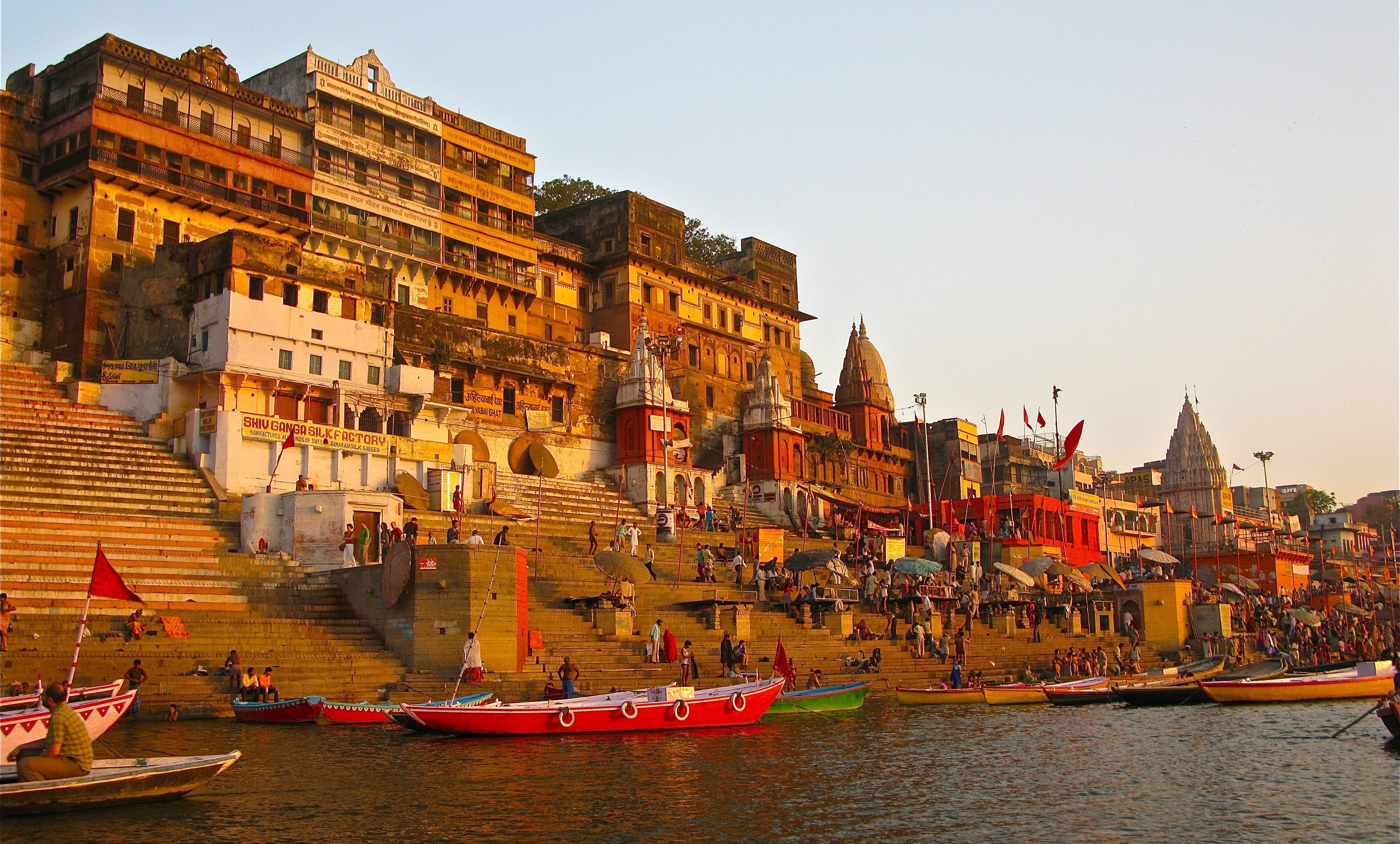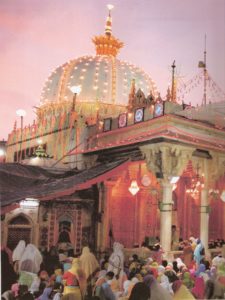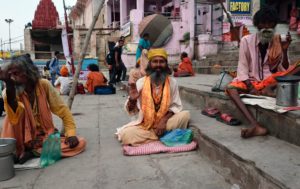
India offers a lifetime of adventures and opportunities to discover a trove of spiritual, cultural and historical treasures. After traversing the north and south of India over the years, I’ve put together a list of the five most enrapturing places I recommend you visit.

1. Taj Mahal, Agra
Agra is home to several historic monuments, making it one of the most visited places in India. The most well known monument is the Taj Mahal, one of the seven wonders of the world. It is a white marble mausoleum (a free-standing structure that encloses the burial chamber of a deceased person) built in the 1600s that took 20 years and more than 20,000 workers to build. There are three entrances to the Taj Mahal: the Eastern Gate, the Western Gate and the Southern Gate. I had the pleasure of entering through the East Gate after my family and I separated to head through the male-and-female-designated lines. Immediately after was the Great Gate Archway, which opens to gardens surrounding the mausoleum. You can see a distant image of the Taj Mahal and the gardens from local rooftop restaurants and hotels in Agra, but entering through the gate and catching the first glimpse of the monument was something magical. To see it with my own eyes felt unreal. From one side, the sheer white of the marble glistens, and from the other, it’s bathed in a golden glow. The beauty of the Taj Mahal is undeniable. I truly can not find the words to describe it.

2. Red Fort, Delhi
Delhi’s enormous Red Fort (also known as the Lal Qila) stood as a home to emperors of the Mughal dynasty for approximately 200 years, until the British takeover in 1857. It’s a place that has withstood many hardships and attacks throughout the centuries. The Red Fort’s red sandstone walls enclose nearly 255 acres of land lying on the banks of the Yamuna River. There are many individual buildings within the fort and 14 entry gates, the most popular being the Lahori, Ajmeri, Kashmiri and Delhi Gates. As I was walking through the Lahori Gate, I came across a three-story ceremonial drum house with intricate carvings in floral patterns, where the musicians would play somber music from the Mughal era. As I made my way deeper into the fort, I came across the Red Fort’s Mumtaz Mahal museum. I was amazed by the incredible craftsmanship of the architecture and the trove of artifacts, statues, stone inscriptions and exhibits that revealed a luxuriant lifestyle I was fascinated by. Unfortunately, I was not able to take photos in the museum, but capturing the arched entrances was enough. After passing through the museum, I saw a market with local vendors inside that were selling various jewelry, ivory work and stonework. Outside the fort, there are many restaurants nearby that I recommend, especially in Delhi. India’s capital is a busy city and holds various other landmarks that inspire awe.

3. Tirumala & Tirupati Balaji Temple
Tirupati is a city in Andhra Pradesh that houses the Tirupati Balaji Temple, one of the most ancient, religious and devotional temples in all of South India. The temple is situated on the seven hills of the Tirumala hilltop, 18 kilometers from the city of Tirupati. Millions of people visit the temple each year, and it has been recognized as a place of worship for Lord Vishnu and Lord Venkateshwara. Many Indians with rich Hindu beliefs will come to Tirumala to embark on a Yātrā (a procession or pilgrimage to holy places). My parents have been there several times to participate in Yātrā and Darshan, which is viewing sacred objects and religious figures, however, I have only been there twice: one time as a little kid, the other, as a young teenager. For Darshan, there is a separate route that leads to approximately 3,550 steps to reach the temple. On the regular route, there are buses or taxis that will take people from the city of Tirupati to the temple on top of the seven hills. However, if people are doing Yātrā and Darshan, they tend to catch a ride up the first two hills and climb the poorly paved stairs the rest of the way. The majority of people do not wear shoes during Darshan. People come freshly showered with their hair washed and freshly clothed, as a sign of respect and purity. As I was making my way up the steps, monkeys were sitting on the edge of the stairs and into the trees. Some even came out and attempted to snatch my bag or say hello, as the temple and the hills are also sanctuaries for animals. After my family and I reached the temple, we were there until nightfall. I will never forget the way the buildings lit up in the dark, or the pastel of the elephant markings. And I will never forget how the chanting of “Om Namo Venkatesaya” reverberates through the entire city of Tirupati, because it made me witness a devotion that I had never experienced before.

4. Ajmer Sharif Dargah, Rajasthan
Rajasthan is home to many palaces, temples and mosques. Within Rajasthan, there is a city called Ajmer that has a mosque built in memory of Sufi saint Khwaja Moinuddin Chisti. It is a shrine that many devotees visit to experience and receive spiritual peace. Ajmer Sharif Dargah is considered one of the holiest places in the world by Muslims. Many people believe that the Sufi saint, who was a Persian man that settled in India, locked himself up in the Ajmer Sharif Dargah as a place to offer prayers for the less fortunate. There are multiple rooms within the mosque. One that holds his tomb and shrine, one that is meant for prayer and the Shah Jahani Mosque. Before entering the mosque, visitors are required to cover their heads with a cap or scarf as a sign of respect to the religious site. People also must leave their shoes, bags and cameras before entering through the Nizam Gate. On my visit, I was led to the shrine, which was made of white marble, inlaid with pieces of stone, and covered with ghilaafs (coverings made with velvet and silk embroidered with gold thread), to offer rose petals and prayers over the tomb. There were many chants and prayers performed inside the shrine room that revealed a yearning for peace and support. A couple of feet in front of me was a woman, dressed in a Burqa (an enveloping outer garment covering the body and face that is worn by women in some Islamic traditions) who burst into an uncontrollable cry. She was leaning towards the carved, stone wall, on her knees, repeatedly hitting her head with her hands as she wept. Her screams were piercing, yet no one beside me bothered to see or hear her. Devotees believe that the Sufi saint’s spirit will intervene on their behalf in matters of illness or personal problems and that is why they pray so hard. The Ajmer Sharif Dargah is a holy place and I will never forget the devotion that filled the air. It was definitely an eye opening experience.

5. Ganges River, Varanasi
Varanasi (also known as the holy city of India) is a beautiful place in the northern Indian state of Uttar Pradesh with a rich history. It is the city where Buddhism was founded and is one of the oldest inhabited cities in the world. The ghats—steps down to the river— are centers of life and action. They lead to the Ganges river, the holy river where Hindus come to wash away their sins and consign the ashes of their loved ones. Along the ghats, there are men dressed in orange called Sadhus (a religious ascetic, mendicant or any holy person in Hinduism and Jainism who has renounced the worldly life). They are men who have dedicated their lives to God and left behind material possessions. I saw many of them sitting alone or with other Sadhus. Once I passed the ghats and got into the Ganges River, it was a full-on sensory experience. I barely have words to describe my experience at Varanasi—it has to be experienced to be believed. My eyes took in the color and chaos, and my ears began to ring, going beyond hearing, while my body was shaking from the cold water. After I got out, I spent hours aimlessly wandering around the city, trying to understand how a river purifies but also pollutes, and plays with how rebirth and death meet. Compared to the other places I have visited, Varanasi offers a brief moment of true introspection and spiritual revelation. I highly recommend Varanasi for anyone’s travel bucket list.




